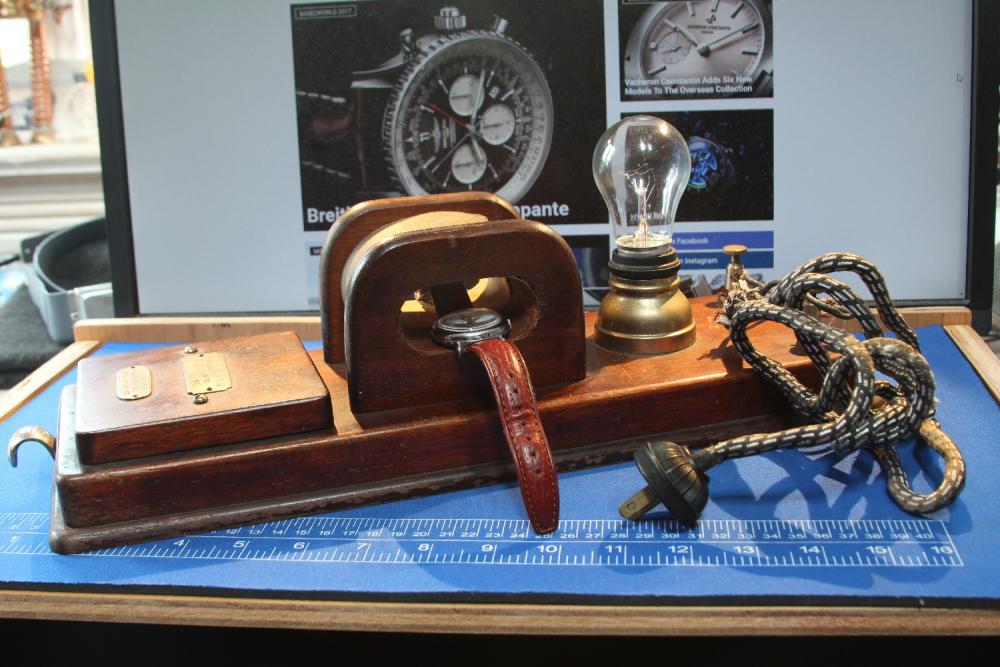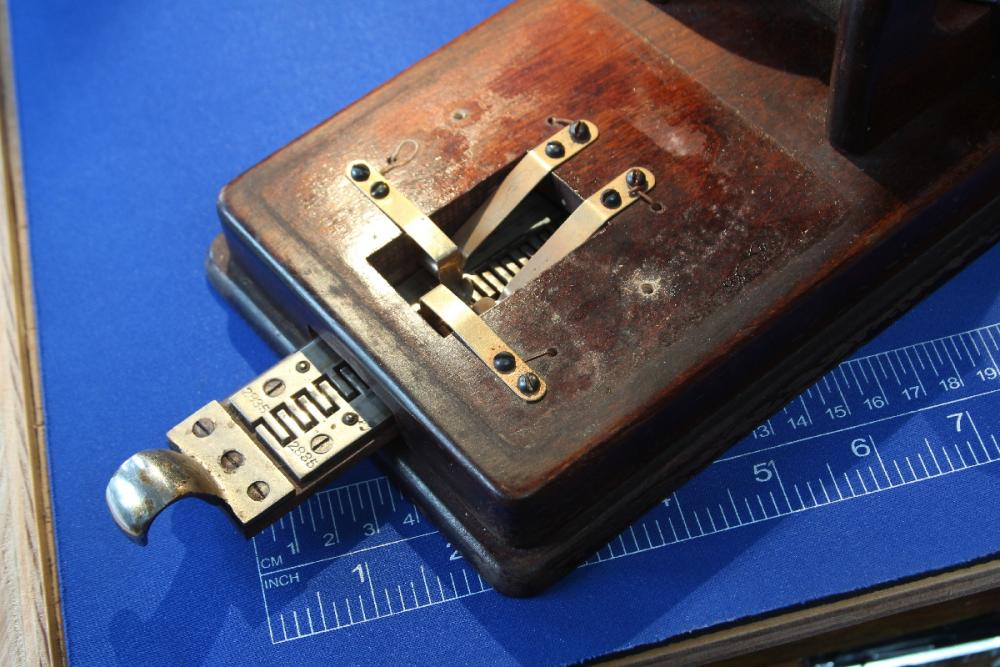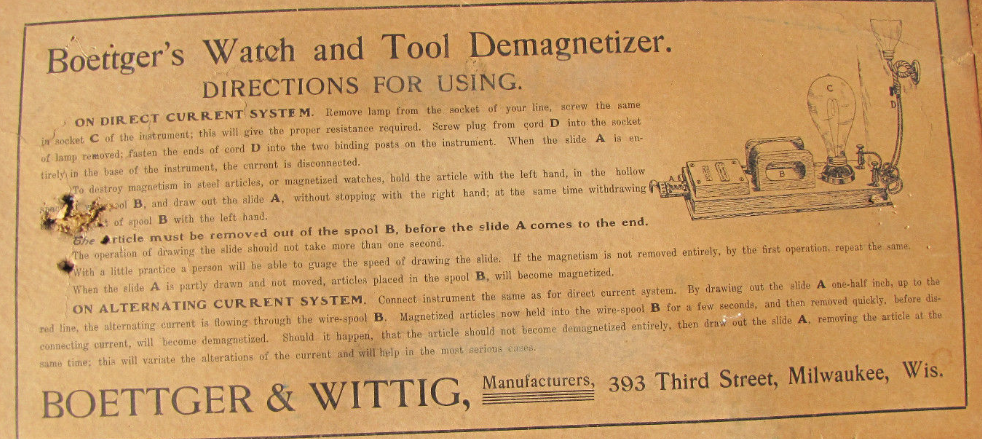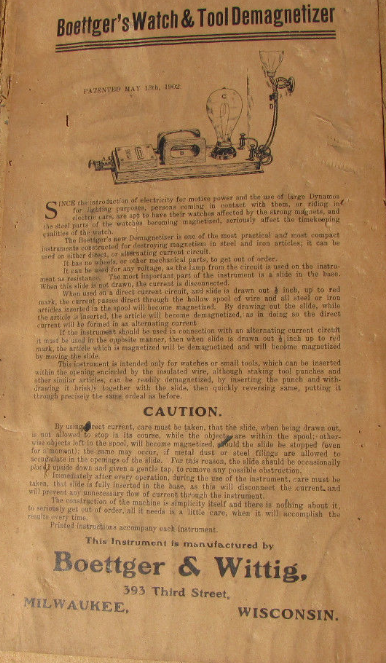Search the Community
Showing results for tags 'demagnetizer'.
-
No wimpy ebay/made in China, blue plastic. $6 dollar watch demagnetizer here. I got me a badass demagnetizer—a 1902 Boettger & Wittig machine made in the U.S.A (Milwaukee WI). I did find it on ebay and bid $35 to win the auction. I didn’t care if it worked as I could make a steam-punk lamp out of it—If I could also use it to demagnetize watches/tools that would be a bonus. I finally got up the nerve to plug it in and after some trial and error I found that it does work. The tool is not UL listed (to say the least) and if the operator touches the terminals where the vintage lamp cord is connected, or the metal on the draw bar it presumably causes instant electrocution as these parts have 120 volts present. In 1902 electricity was still new and I am guessing that anyone that purchased one of these machines had enough education/common sense to not touch the metal parts with it plugged in. I had a question about its operation as the original instructions really don’t explain the finer points of how it works. The tools can be powered by either direct current (D.C.) or alternating current (A.C.) and both were available in 1902 for consumer use. At the time Westinghouse (A.C.) and Edison (D.C) were battling it out over which one was better—Westinghouse won.I drew arrows to show the flow of current. 120 volts is connected to the screw terminals. The light bulb is in series in the circuit and adds resistance to lower the amount of current flowing to the coil. From the light bulb the wires are connected to a wiper that touches one side of the draw bar (pulled out part way at left—yellow arrows indicate 120v). The other 120v terminal connects to the other side of the drawbar. The coil has two wipers that touch each side of the draw bar. When the drawbar is pulled out the coil wipers alternate between each side of the drawbar (you can see the interlocking pattern of the metal on the drawbar) and thus the coil reverses magnetic polarity as the wiper arms touch the different sides of the drawbar. When plugged in the circuit is in one of three states depending on the position of the drawbar: 1) the light is bright and the coil is not receiving current, 2) the light dims indicating that the bulb is in series with the coil with is now an electro magnet, and 3) the coil 120v supply is reversed and swaps north and south magnetic poles.With a screwdriver inside the coil If I pull the drawbar out so the light is dim (coil is on) and leave it for 4 seconds, then shut the tool off the screwdriver becomes magnetic. If I do the same thing but slowly remove the screwdriver from the coil about 2 ft. then shut the current off the screwdriver becomes demagnetized. The same thing happens when I slide the drawbar in/out but the light flickers as it is intermittent to the circuit. So my question is (finally got there) what advantage does sliding the drawbar out to either magnetize or demagnetize watches/tools have. The tool works the same either way—using the drawbar or just turning on the coil.I included the instructions for reference. They are written in the formal language of 1902 and it is difficult to understand what they are trying to convey.
-
This is not only a question but I will deliver the solution as well! My Breitling Navitimer with the B01 movement was ever so accurate. Losing or gaining one second a day. Now, that I wore it after some time, it lost 5-10s per day! I had the same problem right after I bought it and brought it to the place where I bought it and the watchmaker said it was magnetized. After I got it back she again was running perfectly. Now I thought "Let's give it a try and put it on my cheap demagnetizer!" I did that for 5s pulling the watch away from the device while pressing the button. Now, one day later she is back in perfect shape. Lost 0s in 24h! Maybe this will help one of you in the future. Sometimes fixes are easy and cheap. Cheers Alexander





